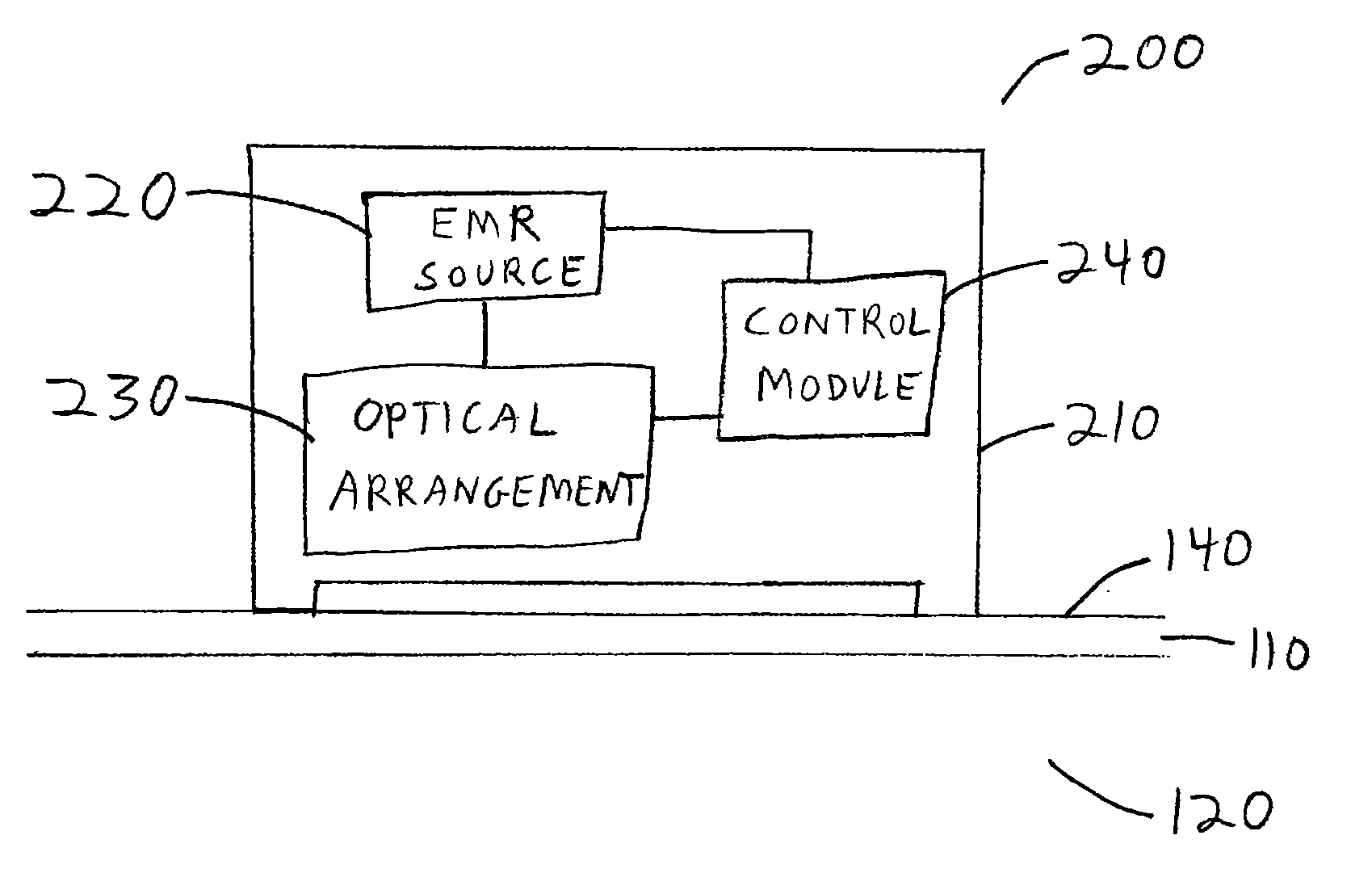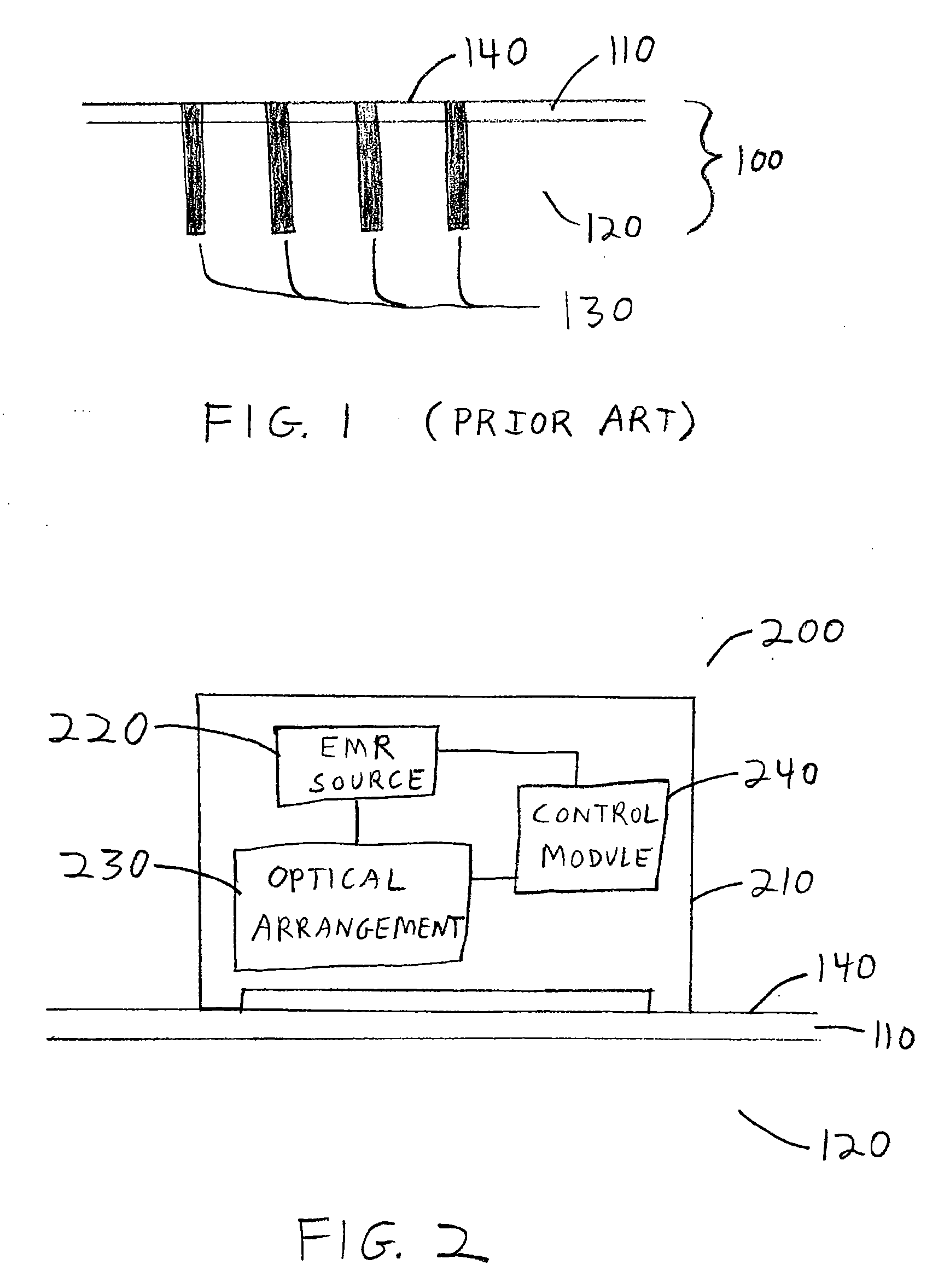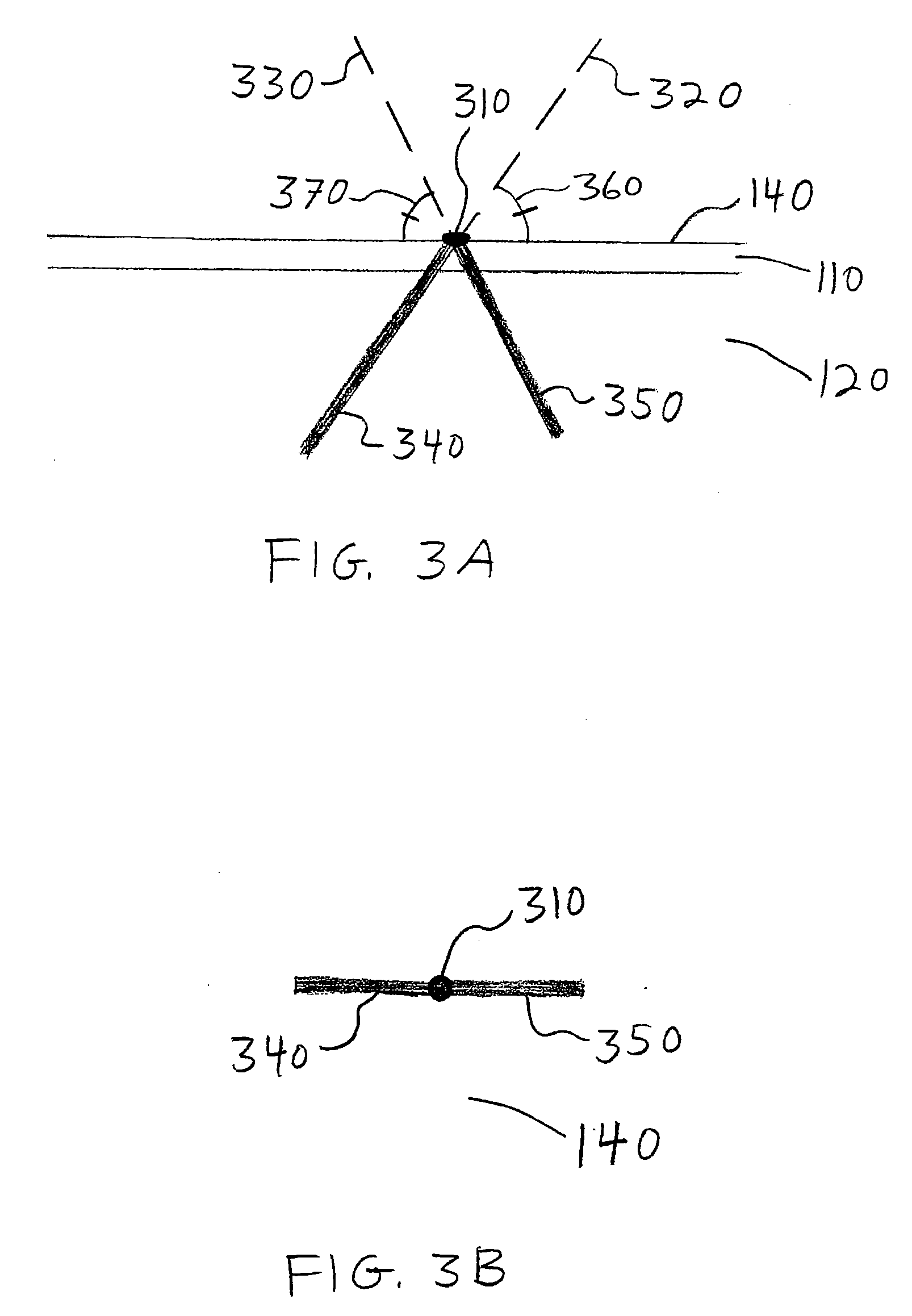Method, system and apparatus for dermatological treatment and fractional skin resurfacing
- Summary
- Abstract
- Description
- Claims
- Application Information
AI Technical Summary
Benefits of technology
Problems solved by technology
Method used
Image
Examples
Embodiment Construction
[0041]FIG. 1 shows a cross-sectional illustration of exemplary damage patterns produced by conventional fractional resurfacing of a target area of skin. An area of skin 100 includes an upper epidermis layer 110, and a lower dermis layer 120. A number of regions of thermal damage 130 extend from the surface of the skin 140 through the epidermis 110 and into the dermis 120.
[0042] These regions of thermal damage 130 can include tissue that has been heated sufficiently to cause at least some degree of tissue damage and / or cell death. The thermal damage can be produced by exposing the skin to a number of collimated beams generated by a source of electromagnetic radiation (“EMR”). These beams can be generated, e.g., by lasers, diodes, diode arrays, etc. Optionally, a portion of the regions of thermal damage 130 can include locations where the tissue has been ablated. Such ablation can be achieved, for example, by the use of highly-absorbed and / or high-powered EMR sources such as, e.g., C...
PUM
 Login to View More
Login to View More Abstract
Description
Claims
Application Information
 Login to View More
Login to View More - R&D
- Intellectual Property
- Life Sciences
- Materials
- Tech Scout
- Unparalleled Data Quality
- Higher Quality Content
- 60% Fewer Hallucinations
Browse by: Latest US Patents, China's latest patents, Technical Efficacy Thesaurus, Application Domain, Technology Topic, Popular Technical Reports.
© 2025 PatSnap. All rights reserved.Legal|Privacy policy|Modern Slavery Act Transparency Statement|Sitemap|About US| Contact US: help@patsnap.com



